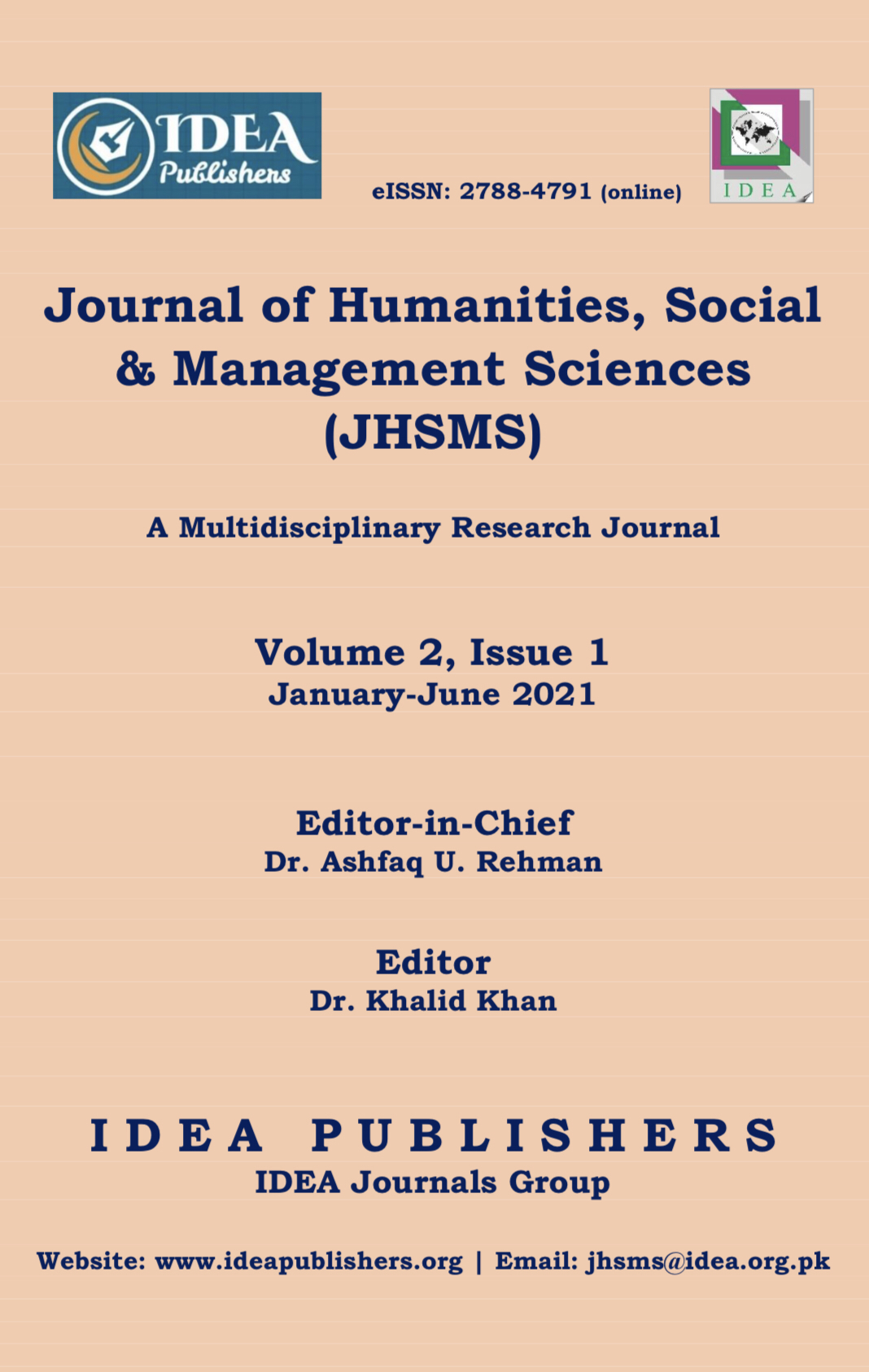The Utopian concept of free state in Gerald Vizenor’s The Heirs of Columbus: An anarchist study
DOI:
https://doi.org/10.47264/idea.jhsms/2.1.9Keywords:
Red-Indians, marginalized community, survival, anarchist spirit, moccasin games, free state, survivance, communist stateAbstract
The present research aims to explore the struggle of the marginalized community for a free nation, where individuals try to regain their culture. Gerald Vizenor’s The Heirs of Columbus has depicted their longing for survival and cultural liberty. Vizenor has tried to regain the voices of the Native people through trickster stories because these stories have a healing power. The analysis shows that Red-Indians in the late fifteen century were never uncivilized as portrayed by the Western historians and the protagonist resisted for the survival of their unique civilizations. The present research has highlighted that how anarchist spirit stimulated a nation to reclaim their lost culture and identity. Their resistance through anarchist principles leads them towards getting a free state, where every individual try to preserve their culture through trickster stories and moccasin games. The tribal people wanted to represent this state as an anarchist Communist state, where there will be no property and land theft. The people will be free from the burden of taxes and prisons. The study concludes with the suggestion to resist power with anarchist spirit of survivance. Future researches are suggested to focus on the theme of marginalization and its strategies in the present novel.
References
Awan, T., & Fatima, S. (2019). Twilight in Delhi and shadows of the Pomegranate tree: A comparative, postcolonial discourse. Academic Research Journal, 10(2), 74-82. http://www.savap.org.pk/journals/ARInt./Vol.10(2)/ARInt.2019(10.2-08).pdf
Berkman, A. (1977). ABC of Anarchism (1st Ed.). Freedom Press.
Cook, N. D. (1998). Born to die: Disease and new world conquest, 1492-1650. Cambridge University.
Creswell, J. W. (2007). Qualitative inquiry and research design: Choosing among the five approaches (2nd Ed.). Sage Publications.
Goldman, E. (1910). Anarchism and other essays (1st Ed.). Mother Earth Publishing Association.
Igwenagu, C. (2016). Fundamentals of research methodology and data collection. LAP Lambart Academia Publishing. https://www.researchgate.net/publication/303381524
Kinna, R. (2005). Anarchism: A beginner's guide (1st Ed.). Simon and Schuster.
Kipling, R. (1899). White Man’s burden (1st Ed.). Doubleday and McClure Co.
Kumar, R. (2019). Research methodology: A step-by-step guide for beginners (3rd Ed.). Sage Publications.
Lord, L., & Burke, S. (1991). America before Columbus. US News and World Report, 8, 22-37.
Mishra, S. B., & Alok, S. (2017). Handbook of research methodology: A compendium for scholars and researchers. Educreation Publishing.
Patton, M. Q. (2002). Qualitative Research and Evaluation Methods (3rd Ed.). Sage Publications.
Powers, W. (1990). When Black Elk speaks, everybody listens. Social Text, 24(1), 43-56. https://doi.org/10.2307/827826
Prichard, A. (2013). Justice, order and anarchy: The International Political Theory of Pierre Joseph Proudhon (1st Ed.). Routledge.
Proudhon, P. J. (1876). What is property? Or, an inquiry into the principle of right and of government (1st Ed.). Princeton University.
Rooum, D. (2016). What is Anarchism? An introduction (2nd Ed.). PM Press.
Sabzalian, L. (2019). Indigenous children’s survivance in public schools (1st Ed.). Routledge.
Said, E. (1978). Orientalism (1st ed.). Vintage Books.
Stanton, C. R. (2020). Survivance story work: Expecting more from ourselves: Indigenous children’s survivance in public schools, by Leilani Sabzalian. Theory and Research in Social Education 48(2), 1-7 https://doi.org/10.1080/00933104.2019.1678329
Stratton, B. J. (2019). Transnational narratives of conflict and empire, the literary art of survivance in the Fiction of Gerald Vizenor. Transmotion, 5(1), 11-32. https://doi.org/10.22024/Unikent/03/tm.581
Vizenor, G. (1991). The Heirs of Columbus. Wesleyan University.
Vizenor, G. (1992). Manifest manners: The long gaze of Christopher Columbus. Boundary 2, 19(3), 223-235. https://doi.org/10.2307/303555
Vizenor, G. (2008). Survivance: Narratives of native presence (1st Ed.). University of Nebraska.
Downloads
Published
How to Cite
Issue
Section
License
Copyright (c) 2021 Fayaz Khan, Amir Turkey, Sehrish Ashraf

This work is licensed under a Creative Commons Attribution-NonCommercial 4.0 International License.
Please click here for details about the Licensing and Copyright policies of IDEA-PG.















